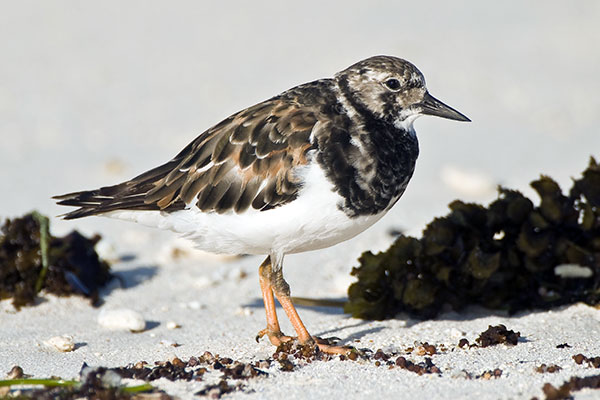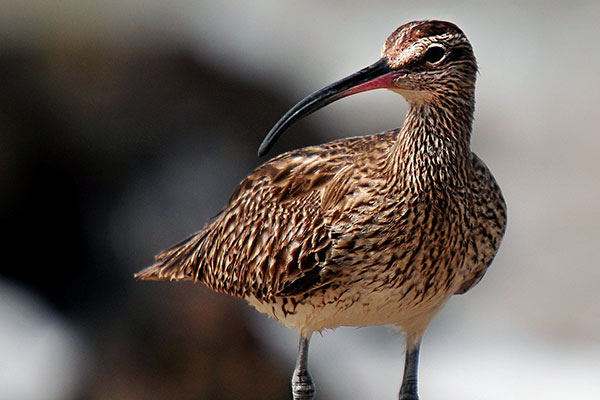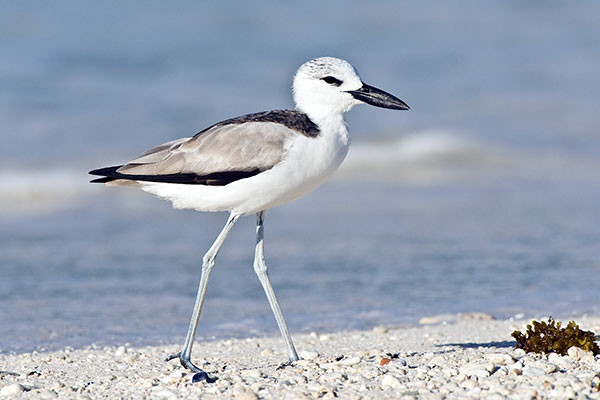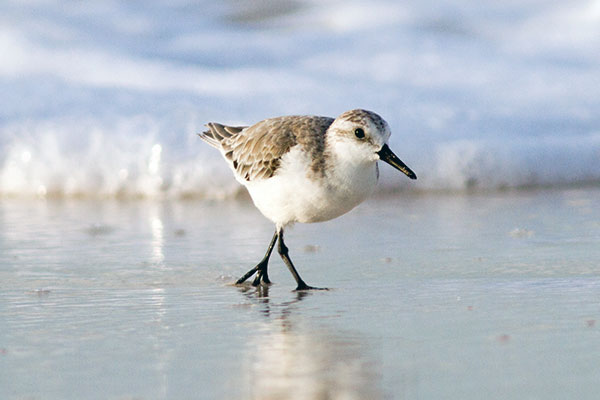Many shorebird species are migratory, visiting Seychelles and other countries in the region during the northern hemisphere winter when food supplies are more plentiful here, and then returning north in the spring to breed. Listed here are the regular migrants, many other species can occasionally be spotted on Cousin on their way through Seychelles.
RUDDY TURNSTONE

Ruddy Turnstone / Bezros / Arenaria interpres
Turnstones breed in the Arctic in the northern hemisphere summer, but migrate to southern coasts all over the world during the rest of the year. On Cousin, they can be found year-round on the beaches as well as throughout the plateau, feeding on small invertebrates like worms, crabs and insects.
WHIMBREL

Whimbrel / Korbizo /Numenius phaeopus
Like the Turnstones, Whimbrels breed in the Siberian Arctic and spend the rest of the year in warmer climates like Seychelles. Easily identified by their long, slightly downward curved beaks, these birds use their beaks to find worms 7-8cm down in the sand or mud at low tide. At high tide, they feed on Ghost crabs further up the beach.
crab plover

Crab plover / Kavalye / Dromas ardeola
An occasional visitor to the shores of Cousin, this attractive black and white shorebird likes to eat crabs, a feat for which it’s strong black bill is well adapted. During the northern hemisphere summer, Crab plovers return to the Red Sea, where they breed on sandy islands or near coral reefs. Nesting pairs actually dig a long tunnel of at least one metre underground, at the end of which they lay their egg – an amazing feat for such seemingly delicate birds!
Sanderling

Sanderling / Bekaso blan / Calidris alba
A northern hemisphere winter visitor to Seychelles, the Sanderling is a tiny shorebird with a dark beak and dark legs. Small groups of them can often be seen on Cousin, scurrying up and down the beach to avoid being swamped by waves as they probe the sand for worms and small crustaceans.

